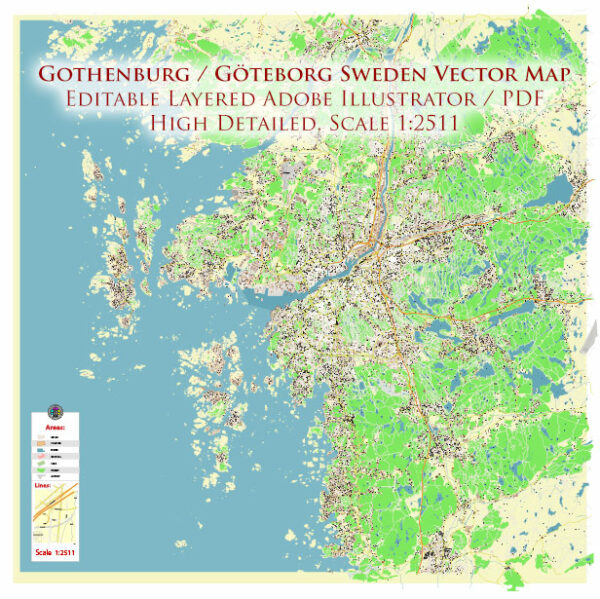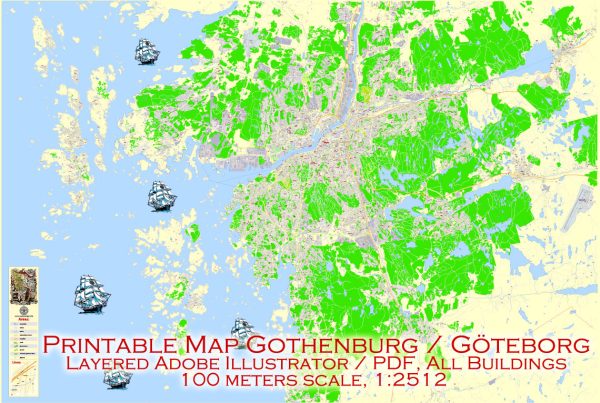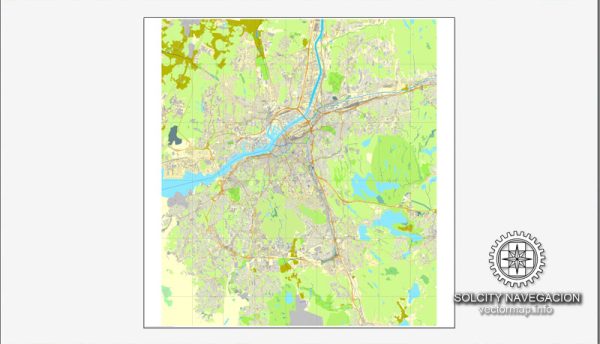Gothenburg, known as “Göteborg” in Swedish, is the second-largest city in Sweden and is located on the country’s west coast, overlooking the Kattegat, a part of the North Sea. The history of Gothenburg is rich and fascinating, and it has played a significant role in the development of Sweden and the surrounding region.
Here is a brief history and description of Gothenburg:
- Founding and Early History: Gothenburg was founded in 1621 by King Gustav II Adolph of Sweden. It was established as a fortified city and a strategic port on the west coast. The king hoped to create a rival to the Hanseatic League’s trading dominance in the Baltic Sea. The city was named after the Göta River, which flows through the region. The city quickly became a vital center for trade and commerce.
- The Dutch Influence: During its early years, Gothenburg had a significant Dutch influence due to the role of Dutch planners and engineers in designing the city and its canals. This influence can still be seen in some of the city’s architecture and urban layout.
- Trade and Industry: Gothenburg has always been a major hub for trade and industry in Sweden. The port is one of the largest and busiest in the country, and it has been instrumental in facilitating international trade and the growth of various industries.
- Cultural and Educational Hub: Gothenburg is known for its vibrant cultural scene and prestigious educational institutions. The University of Gothenburg and Chalmers University of Technology are renowned for their contributions to research and education.
- Maritime History: As a coastal city with a rich maritime heritage, Gothenburg played a pivotal role in Sweden’s naval and shipping history. The city is home to the Maritime Museum, which showcases the country’s seafaring past.
- Industrial Revolution: The 19th century marked a period of significant industrial growth in Gothenburg. Industries such as shipbuilding, manufacturing, and engineering thrived, contributing to the city’s prosperity and development.
- World War II and Beyond: During World War II, Gothenburg played a critical role in Sweden’s neutrality. It served as a hub for humanitarian efforts and diplomatic activities. After the war, the city continued to grow and diversify its economy.
- Modern Gothenburg: Today, Gothenburg is a modern and cosmopolitan city with a diverse population. It is known for its green spaces, cultural festivals, and a thriving arts and music scene. The Liseberg amusement park, Gothenburg Opera, and Universeum Science Center are some of the city’s popular attractions.
- Sustainable Development: Gothenburg is also at the forefront of sustainable urban development and environmental initiatives. It has implemented numerous green and sustainable policies, making it a leader in eco-friendly urban planning.
In summary, Gothenburg’s history is intertwined with trade, industry, maritime heritage, and cultural development. It has evolved into a dynamic and environmentally conscious city that continues to be an essential part of Sweden’s economic and cultural landscape.




 Author: Kirill Shrayber, Ph.D.
Author: Kirill Shrayber, Ph.D.